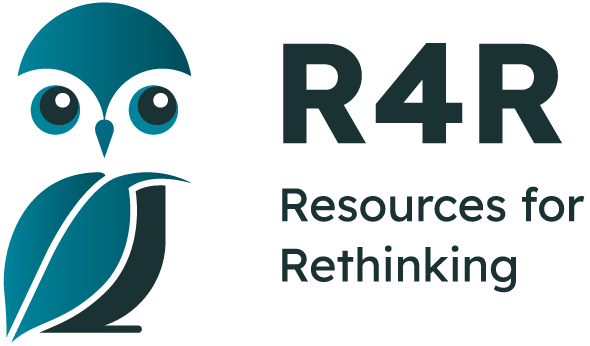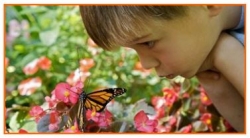- Home
- Tutorial
- Resource Guides
- Focus Areas
- LSF Programs
-
Professional
Development - Review Process
-
A project of LSF

Search for Resources
Description
This multi-lesson unit has students explore concepts including butterfly’s life cycle, pollination, plant growth, and migration. They will recognize that people have complex relationships with Monarchs and the plants which sustain them. Students will discuss ways humans interact with Monarchs, how human activities can threaten Monarch survival, and consider actions they can take to conserve pollinator species. Students will also explore many facets of plants, including structure, function, and importance.The unit is divided into lessons specific for grade levels 1 to 3, including multiple activities that can be used independently or as a monthly unit.
General Assessment
What skills does this resource explicitly teach?
- Observation
- Analysis
- Classification
- Use of scientific equipment
- Communication and critical thinking
- Community mapping
- Habitat restoration and lose
Strengths
- Extremely well organized with all of the handouts and worksheets easily accessible.
- Includes a large variety of learning experiences with an emphasis on active learning.
- Each module can be taught independently providing a great deal of flexibility in delivery.
Weaknesses
- Activities are designed to meet the Ontario science curriculum standards for the grades indicated, however some teachers may wish to adjust activities slightly for a different grade.
- The recommended books are not included and must be purchased.
Recommendation of how and where to use it
The lessons in this resource support curriculum outcomes related to the diversity of life, interactions within ecosystems and ecological sustainability. Because students learn about the importance of pollinating insects and the effects this can have on plants, including the growth of fruits and vegetables, there is an opportunity to develop an integrated Science/Health unit that examines food production from the context of maintaining a healthy lifestyle and being environmentally friendly. Students will learn what it means when talking about habitat loss and climate change and how it affects the life cycle and why it is important to live a sustainable life.
Relevant Curriculum Units
The following tool will allow you to explore the relevant curriculum matches for this resource. To start, select a province listed below.
- Step 1Select a province
- Alberta
- Step 2Select a grade level
- Kindergarten
- Step 3Select a subject
- Science
- Step 4Relevant matches
- Earth Systems: Understandings of the living world, Earth, and space are deepened by investigating natural systems and their interactions.
- Grade 1
- Step 3Select a subject
- Math
- Step 4Relevant matches
- Measurement: Attributes such as length, area, volume, and angle are quantified by measurement.
- Science
- Step 4Relevant matches
- Living Systems: Understandings of the living world, Earth, and space are deepened by investigating natural systems and their interactions.
- Grade 2
- Step 3Select a subject
- Math
- Step 4Relevant matches
- Statistics: The science of collecting, analyzing, visualizing, and interpreting data can inform understanding and decision making
- Science
- Step 4Relevant matches
- Living Systems: Understandings of the living world, Earth, and space are deepened by investigating natural systems and their interactions
- Social Studies
- Step 4Relevant matches
- Systems: Evaluating processes and structures of organizations builds understanding of decision making in the world.
- British Columbia
- Step 2Select a grade level
- Kindergarten
- Step 3Select a subject
- Science
- Step 4Relevant matches
- Science: Daily and seasonal changes affect all living things.
- Science: Humans interact with matter every day through familiar materials.
- Grade 1
- Step 3Select a subject
- Science
- Step 4Relevant matches
- Science 1: Living things have features and behaviours that help them survive in their environment
- Social Studies
- Step 4Relevant matches
- Local Communities:: We shape the local environment, and the local environment shapes who we are and how we live.
- Grade 2
- Grade 3
- Step 3Select a subject
- Science
- Step 4Relevant matches
- Science 3: Living things are diverse, can be grouped, and interact in their ecosystems
- Manitoba
- Step 2Select a grade level
- Kindergarten
- Step 3Select a subject
- Science
- Step 4Relevant matches
- Life Science
- Grade 1
- Step 3Select a subject
- Science
- Step 4Relevant matches
- Characteristics and Needs of Living Things
- Daily and Seasonal Changes
- Evolution
- Social Studies
- Step 4Relevant matches
- My Environment
- Grade 2
- New Brunswick
- Newfoundland & Labrador
- Step 2Select a grade level
- Kindergarten
- Step 3Select a subject
- Science
- Step 4Relevant matches
- Exploring Our World: STSE and Knowledge
- Grade 1
- Step 3Select a subject
- Science
- Step 4Relevant matches
- Daily & Seasonal Changes
- Needs and Characteristics of Living Things
- Social Studies
- Step 4Relevant matches
- Environments
- Grade 2
- Step 3Select a subject
- Math
- Step 4Relevant matches
- Statistics & Probability
- Science
- Step 4Relevant matches
- Animal Growth and Changes
- Social Studies
- Step 4Relevant matches
- Environments
- Northwest Territories
- Step 2Select a grade level
- Kindergarten
- Step 3Select a subject
- Science
- Step 4Relevant matches
- Science: Daily and seasonal changes affect all living things.
- Science: Humans interact with matter every day through familiar materials.
- Grade 1
- Step 3Select a subject
- Science
- Step 4Relevant matches
- Earth and Space Systems: Daily and Seasonal Cycles
- Life Systems: Characteristics and Needs of Living Things
- Science 1: Plants and animals have features and behaviours that help them survive in their environment
- Social Studies
- Step 4Relevant matches
- Connecting and Belonging: My Environment
- Local Communities:: We shape the land and the land shapes who we are and how we live.
- Grade 2
- Step 3Select a subject
- Math
- Step 4Relevant matches
- Concrete items can be represented, compared, and interpreted pictorially in graphs.
- Statistics & Probability
- Science
- Step 4Relevant matches
- Life Science: Growth and Changes in Animals
- Science 2: Plants and animals have life cycles adapted to their environment
- Grade 3
- Step 3Select a subject
- Science
- Step 4Relevant matches
- Science 3:Plants and Animals are diverse, can be grouped, and interact in their ecosystems
- Nova Scotia
- Step 2Select a grade level
- Kindergarten
- Step 3Select a subject
- Science
- Step 4Relevant matches
- Primary Science: Living Things
- Grade 1
- Grade 2
- Step 3Select a subject
- Math
- Step 4Relevant matches
- Mathematics 2: Measurement
- Mathematics 2: Statistics and Probability
- Science
- Step 4Relevant matches
- Science 2: Animal Growth
- Social Studies
- Step 4Relevant matches
- Social Studies 2:Environments
- Nunavut
- Step 2Select a grade level
- Grade 1
- Step 3Select a subject
- Science
- Step 4Relevant matches
- Earth and Space Systems: Daily and Seasonal Cycles
- Life Systems: Characteristics and Needs of Living Things
- Social Studies
- Step 4Relevant matches
- Connecting and Belonging: The Land: Place & People
- Grade 2
- Ontario
- Step 2Select a grade level
- Kindergarten
- Step 3Select a subject
- Science & Technology
- Step 4Relevant matches
- Problem Solving and Innovating: Overall Expectations
- Grade 1
- Step 3Select a subject
- Science & Technology
- Step 4Relevant matches
- Earth and Space Systems: Daily and Seasonal Changes
- Life Systems: Needs and Characteristics of Living Things
- Social Studies
- Step 4Relevant matches
- People and Environments: The Elements of the Local Community
- Grade 2
- Step 3Select a subject
- Math
- Step 4Relevant matches
- Data
- Spatial Sense
- Science & Technology
- Step 4Relevant matches
- Life Systems: Growth & Changes in Animals
- Social Studies
- Step 4Relevant matches
- People and Environments: Global Communities
- Prince Edward Island
- Step 2Select a grade level
- Grade 1
- Step 3Select a subject
- Science
- Step 4Relevant matches
- Daily and Seasonal Changes
- Needs and Characteristics of Living Things
- Social Studies
- Step 4Relevant matches
- Interactions: Environments
- Grade 2
- Step 3Select a subject
- Math
- Step 4Relevant matches
- Statistics and Probability
- Science
- Step 4Relevant matches
- Animal Growth and Changes:Investigating the Needs and Life Cycles of an Organism
- Social Studies
- Step 4Relevant matches
- Change: Environment
- Quebec
- Step 2Select a grade level
- Grade 1
- Step 3Select a subject
- Math
- Step 4Relevant matches
- Measurement
- Science & Technology
- Step 4Relevant matches
- Living things
- Grade 2
- Step 3Select a subject
- Math
- Step 4Relevant matches
- Measurement
- Statistics & Probability
- Science & Technology
- Step 4Relevant matches
- Living things
- Grade 3
- Step 3Select a subject
- Science & Technology
- Step 4Relevant matches
- Living Things
- Saskatchewan
- Yukon Territory
- Step 2Select a grade level
- Kindergarten
- Step 3Select a subject
- Science
- Step 4Relevant matches
- Science: Daily and seasonal changes affect all living things.
- Science: Humans interact with matter every day through familiar materials.
- Grade 1
- Step 3Select a subject
- Science
- Step 4Relevant matches
- Science 1: Living things have features and behaviours that help them survive in their environment
- Social Studies
- Step 4Relevant matches
- Local Communities:: We shape the local environment, and the local environment shapes who we are and how we live.
- Grade 2
- Grade 3
- Step 3Select a subject
- Science
- Step 4Relevant matches
- Science 3: Living things are diverse, can be grouped, and interact in their ecosystems
Themes Addressed
Ecosystems (3)
- Appreciating the Natural World
- Biodiversity
- Wildlife Protection
Land Use & Natural Resources (1)
- Habitat Restoration
Sustainability Education Principles
| Principle | Rating | Explanation |
|---|---|---|
| Consideration of Alternative Perspectives | Good | This resource leads students through an understanding of the connections between plants and pollinators. This fosters an appreciation of the vital role of insects in their own lives. Students are also actively engaged in considering the conservation challenges that face pollinating insects and their habitats. |
Consideration of Alternative Perspectives:
| ||
| Multiple Dimensions of Problems & Solutions | Good | As students learn about the process of pollination, they will deepen their understanding of threats these insects are faced with by human activity or climate change. Thus, the connection between environmental and economic sustainability is made while the social implications of habitat security is highlighted. |
| Multiple Dimensions of Problems & Solutions: Effectively addresses the environmental, economic and social dimensions of the issue(s) being explored.
| ||
| Respects Complexity | Good | Students are able to explore scientific cause and effect relationships and use this information to describe interactions within ecosystems and develop new ideas about conservation. |
| Respects Complexity: The complexity of the problems/issues being discussed is respected. | ||
| Acting on Learning | Good | |
| Acting on Learning: Learning moves from understanding issues to working towards positive change — in personal lifestyle, in school, in the community, or for the planet
| ||
| Values Education | Good | By providing an in-depth exploration of insects that are most often seen as disgusting creatures, this resource will help develop a new appreciation of pollinators. Conservation often focuses on more appealing species, so it is important that students have an opportunity to gain insight into the connections between all living things. This learning unit provides a platform for this self discovery. |
| Values Education: Students are explicitly provided with opportunities to identify, clarify and express their own beliefs/values. | ||
| Empathy & Respect for Humans | Satisfactory | |
| Empathy & Respect for Humans: Empathy and respect are fostered for diverse groups of humans (including different genders, ethnic groups, sexual preferences, etc.). | ||
| Personal Affinity with Earth | Good | With multiple outdoor exploration activities students have a chance to realize the importance all living things have with the Earth. |
| Personal Affinity with Earth: Encourages a personal affinity with -the natural world.
| ||
| Locally-Focused Learning | Good | Insects play a vital role in the agricultural economy of many regions of Canada, so this issue is relevant across the country. On a more personal level, students will also make a connection between their explorations and the food they buy at grocery stores and farmer's markets. A focus on local habitat conservation is also an integral component of this resource. |
| Locally-Focused Learning: Includes learning experiences that take advantage of issues/elements within the local community.
| ||
| Past, Present & Future | Satisfactory | |
| Past, Present & Future: Promotes an understanding of the past, a sense of the present, and a positive vision for the future. | ||
Pedagogical Approaches
| Principle | Rating | Explanation |
|---|---|---|
| Open-Ended Instruction | Good | There are many opportunities for students to establish connections with prior learning through inquiry-based activities that develop reasoning skills and uses critical thinking skills. |
| Open-Ended Instruction
: Lessons are structured so that multiple/complex answers are possible; students are not steered toward one 'right' answer. | ||
| Integrated Learning | Good | This resource has been developed to primarily support science outcomes but can be used in relation to other subjects. |
| Integrated Learning: Learning brings together content and skills from more than one subject area
| ||
| Inquiry Learning | Good | The activities encourage interaction and engagement with nature in a manner that provides many opportunities for students to move beyond the parameters of the lesson to make new discoveries. |
| Inquiry Learning: Learning is directed by questions, problems, or challenges that students work to address.
| ||
| Differentiated Instruction | Good | There are no specific differentiation strategies but there are a variety of learning options in each module. Students will participate in hands-on nature exploration and videos are provided for our auditory and visual learners. |
| Differentiated Instruction: Activities address a range of student learning styles, abilities and readiness.
| ||
| Experiential Learning | Good | All of the activities incorporate a hands-on approach that engages students in a meaningful learning experience. |
| Experiential Learning: Authentic learning experiences are provided
| ||
| Cooperative Learning | Good | |
| Cooperative Learning: Group and cooperative learning strategies are a priority.
| ||
| Assessment & Evaluation | Good | |
| Assessment & Evaluation: Tools are provided that help students and teachers to capture formative and summative information about students' learning and performance. These tools may include reflection questions, checklists, rubrics, etc. | ||
| Peer Teaching | Satisfactory | |
| Peer Teaching: Provides opportunities for students to actively present their knowledge and skills to peers and/or act as teachers and mentors.
| ||
| Case Studies | Good | Collecting habitat data within their own community and school yards ensures that students are exploring this topic in a relevant context. |
| Case Studies: Relevant case studies are included. Case studies are thorough descriptions of real events from real situations that students use to explore concepts in an authentic context. | ||
| Locus of Control | Good | The balance between classroom instruction and discussions as well as outdoor exploration provides students with many opportunities to direct their own learning. |
| Locus of Control: Meaningful opportunities are provided for students to choose elements of program content, the medium in which they wish to work, and/or to go deeper into a chosen issue. | ||

